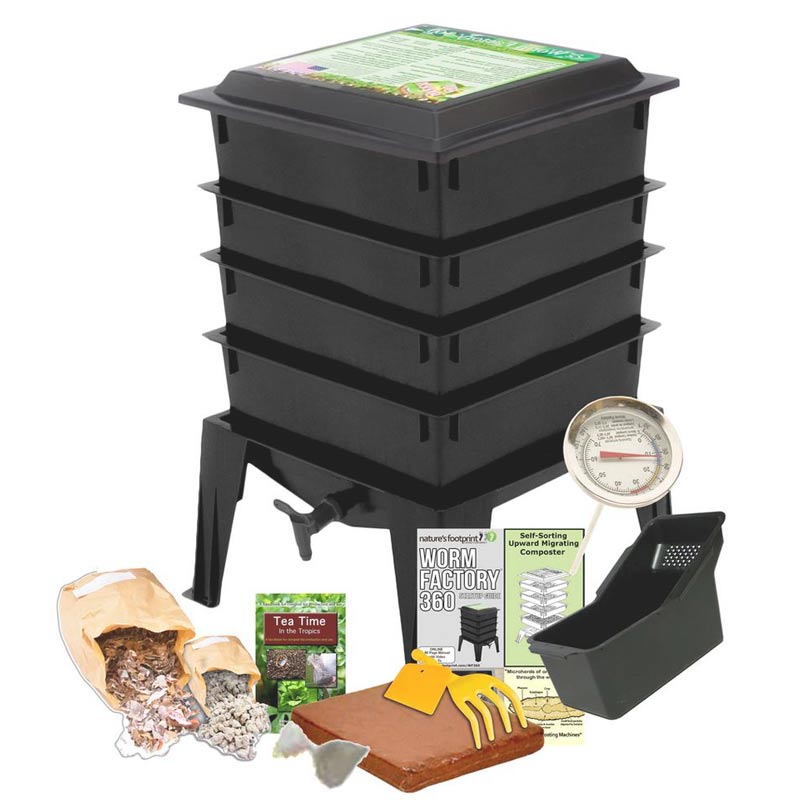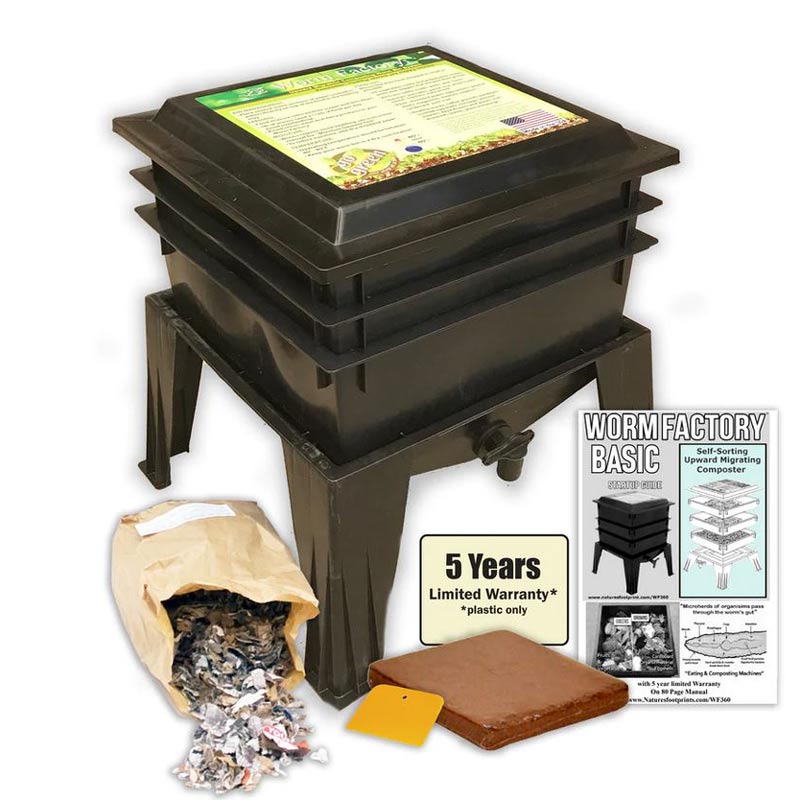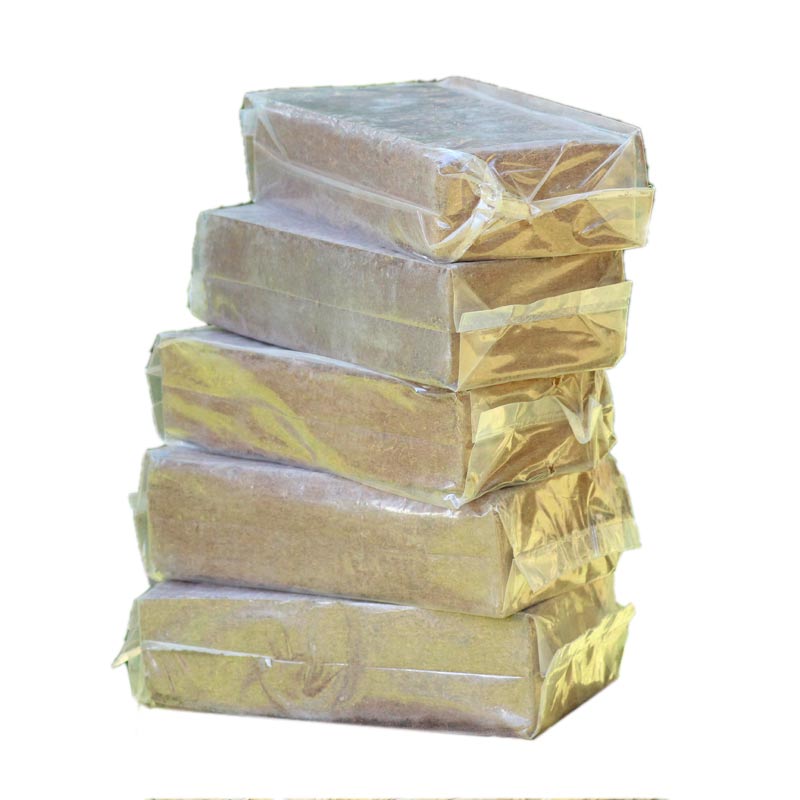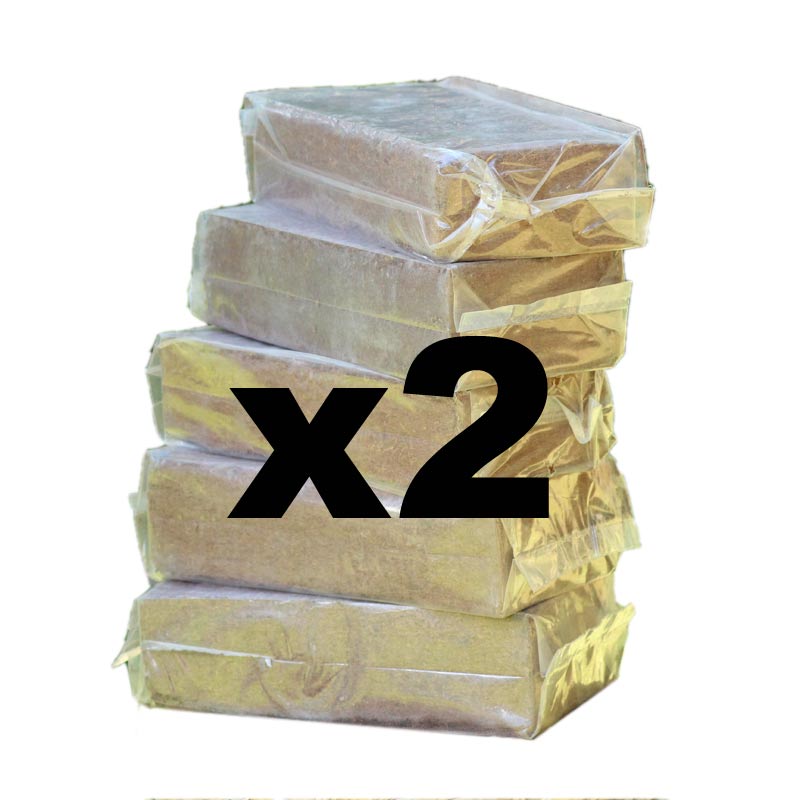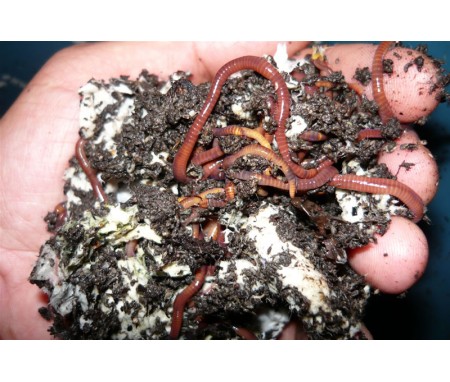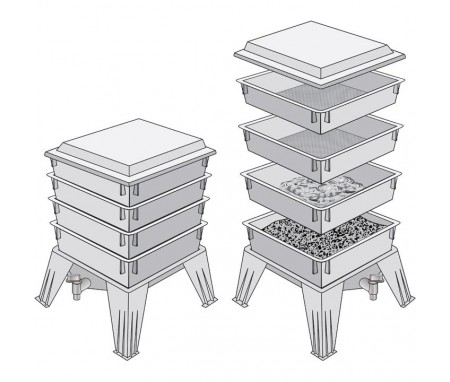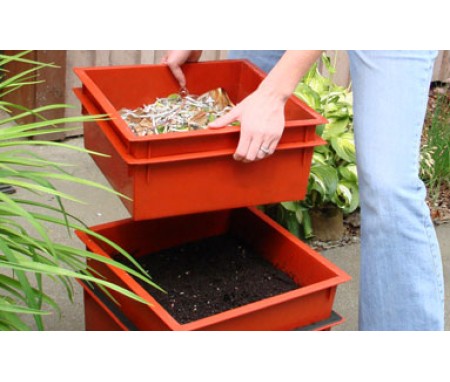The Do-It-Yourself Worm Bin
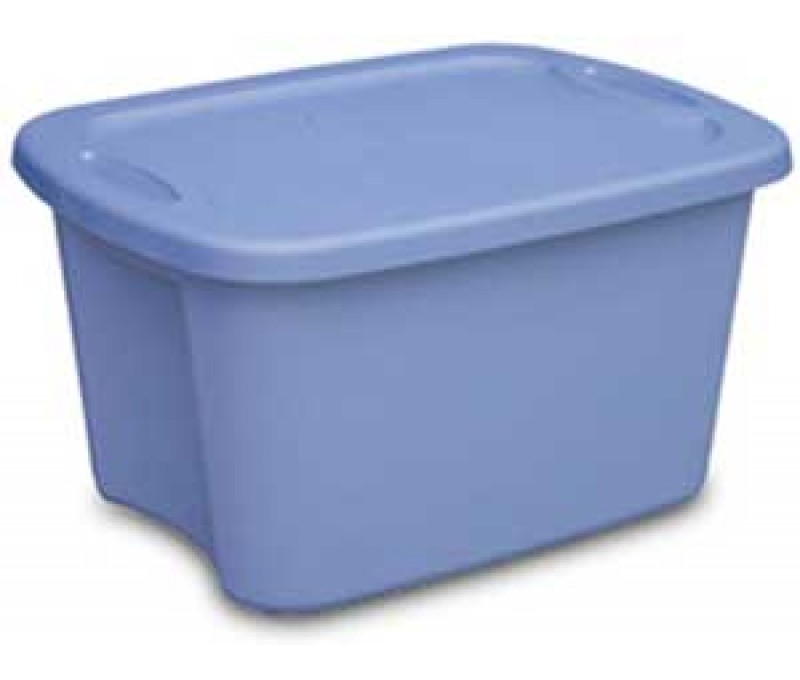
If you are reading this then it looks like you are ready to jump in and begin raising worms! To do this you basically have two choices to house your worms: You can purchase a manufactured grow system or build one yourself. In this article we will cover how to use common household materials and tools to make a Do-It-Yourself Worm Bin.
What You'll Need
- 15 - 18 gallon plastic bin (
- 2 lids for plastic bin (one each for top and bottom)
- Drill
- 1/8" drill bit
- Package of peat mossorLarge bundle of shredded paper orcow, rabbit or horse manure
- Garden Lime (optional)
- Food scraps
- Earthworms (recommend 2 lbs)
Step 1: Drill Holes
Drill 1/8" holes on the sides and lid of your bin. Drill a total of 15-20 holes on the sides near the top and 15-20 holes in the bottom. This is for ventilation so your worms can get air and to allow excess moisture to drain. To catch any moisture or worms that may leave the holes in the bottom you can use a duplicate lid (buy 2 bins with lids, when you harvest the vermicompost you can store it in the extra bin).Step 2: Moisten The Bedding
You can use peat moss, shredded paper, coconut coir or composted manure. Use a bucket or similar container and fill halfway with water. Completely submerge the shredded paper or peat moss. Manure doesn't need to be soaked. If using coconut coir check out our article on how to easily moisten a coconut coir brick. If using peat moss of paper, wring out the bedding like a sponge by tightly squeezing until it stops dripping. Just remember that worms don't like soggy bedding.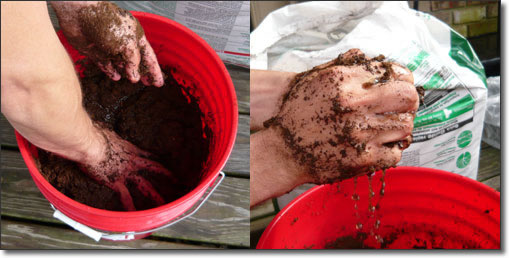
Step 3: Add Bedding to Bin
There are a couple of different ways to do this, depending on what type of bedding you choose to use.Shredded Paper
Add paper until bin is 3/4 full. Be sure to "fluff" up the bedding so that it isn't matted or too compacted. Add some dirt for "grit" -- this gives your earthworms something to help their gizzard pulverize their food. You can soak the paper in water or "mist" it with water (see video for example).If your bin is too wet, try adding a layer of dry shredded newspaper on top. In one or two days you'll find that the dry paper has absorbed the excess moisture. |
Peat or Sphagnum Moss
Method 1: Fill bin 6 inches with moistened peat. Feed bin with kitchen scraps. Fluff bin when necessary.Method 2: Fill bin 6 inches with moistened peat. Add 4-5 inches of shredded newspaper. Feed bin with kitchen scraps. Fluff bin when necessary.
Method 3: Layer the bin with peat, lime, and manure. This method ensures that the pH level of your bedding isn't as acidic as using just peat moss, plus calcium is essential to worm reproduction. Add 3 inches of peat, then sprinkle two teaspoons of garden lime, then add 3 inches of composted manure. Fluff bin when necessary.

